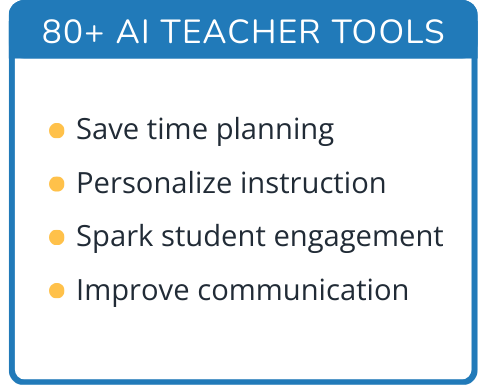Hi, what do you want to do?
Curated OER
Coral Reef Ecosystem
The coral reef ecosystem is abundant and lively. Dive in for an underwater view of the species living there. Polyps, urchin, barracudas, and eels (among others) exist in part because of the sun's presence in this ecosystem. Use this as...
Scholastic
Study Jams! Ecosystems
With the forest as an example, Sam and Zoe talk about the components biotic and abiotic of an ecosystem. They also discuss the role of producers, consumers, and decomposers. This concise clip covers all of the basics. As an introduction...
Scholastic
Study Jams! Food Webs
Rhinozilla is back to take your lesson plan on trophic levels a step higher! After showing the video on food chains (available through the See All Related Jams button), add to it by showing this one. It deals with omnivores and food...
Bill Nye
Bill Nye The Science Guy on the Food Web
Plants. We can't live without them! Bill Nye discusses how every living thing relies on plants using a concept called the food web. In a very visual demonstration, he ties a cord from one picture to another on a three-dimensional...
PBS
Photosynthesis | UNC-TV Science
Discover what links photosynthesis and food chains together. Scientists explore the basics of photosynthesis, including its products, during an animated activity. While watching the video, investigators also learn the importance of sugar...
Nature League
Biodiversity and Extinction Vulnerability - De-Natured
Science benefits everyone, so why is the language in journal articles so difficult to understand? The third video in the four-part series on Biodiversity breaks down a journal article so everyone understands the content. The article...
PBS
The Food Chain
How does the amount of water required to grow alfalfa impact ice cream prices? The PBS food science video, part of a larger playlist, explains how farmers use water to grow the alfalfa that is fed to dairy cows. the video introduces the...
Bozeman Science
LS2B - Cycles of Matter and Energy Transfer in Ecosystems
Produce, consume, decompose...repeat! Examine how matter and energy cycles in ecosystems by watching a video discussing NGSS standard LS2B. The narrator explains the requirements of the standard at each grade level, plus gives tips to...
Bozeman Science
LS1C - Organization for Matter and Energy Flow in Organisms
How do you plan to approach standard LS1C, Organization for Matter and Energy Flow in Organisms? Avoid information overload with helpful advice in a short video. Topics include energy sources, relationships between organisms, and...
Teacher's Pet
Energy Transfer in Trophic Levels
Learn more about food chains, the food web, and the concepts relating to them. It focuses on consumers, producers, decomposers, energy transfer, and energy loss across trophic levels.
Be Smart
Ghosts of Evolution
Since avocados are fruits, is guacamole a smoothie? The video explains how trees that produce fruit with no natural way to spread their seeds are still alive. It goes into detail about avocado trees and ginko biloba trees.
Amoeba Sisters
Biomagnification and the Infamous DDT
People once recommended that you should wear a mask when spraying DDT onto the skin of the food you would later eat. The video explains biomagnification and the impact that giving toxins to producers has on the largest consumers. It uses...
Amoeba Sisters
Food Webs and Energy Pyramids: Bedrocks of Biodiversity
How come we don't eat worms, but we eat fish that eat worms? A video features the food chain and explains why a food web is a better explanation for biodiversity. It includes explanations of producers, autotrophs, consumers,...
Crash Course Kids
Food Webs
What happens when an ecosystem gets out of balance? This is the focus of a video that explains the importance of each organism's role in an ecosystem.
Crash Course Kids
Home Sweet Habitat
Why can't a polar bear live in the desert? Because the bear's food source lives in the habitat in which it thrives. This is the focus of a video that explains why certain animals live in specific habitats.
Crash Course Kids
Fabulous Food Chains
What is a food chain? Energy flows between living things in a food chain. This is the focus of a video that explains how food chains work.
TED-Ed
I'm Batman
When you think about bats, what comes to mind? Vampires? Rabies? After watching this short video you'll have a whole new appreciation for these terribly misunderstood mammals.
TED-Ed
Feedback Loops: How Nature Gets Its Rhythms
Explore the role of feedback loops in maintaining nature's delicate balance with this short science video. Introducing the concepts of positive and negative feedback, multiple examples are presented that explore the intricate web of...
TED-Ed
Why Are Blue Whales So Enormous?
Isn't it strange that Earth's largest animal lives on one of its tiniest? Using Sesame-Street-style puppetry, this video explains how this phenomenon happens. Viewers learn that a single mouthful of krill taken in by a whale has the...
Curated OER
Life in the Polar Regions
Take a look at the coldest, windiest, and driest place on earth: the arctic! Very few species exist here, and those that do have undergone several adaptations to ensure their survival. Learn about some of these unique animals and their...
Scholastic
Study Jams! Food Chains
Rhinozilla is Mia's bearded dragon and the focus of this lesson on energy flow in an ecosystem. She uses him to explain the energy pyramid, from producers through third level consumers, and she likens the food chain to a video game. Mia...
Curated OER
Biomes: Deciduous Forests
Deciduous forests can be found in almost all corners of the world, ranging from the United States to Russia to New Zealand. While this video has slightly choppy editing, it covers the types of animals, trees, and fungi that live in the...
























